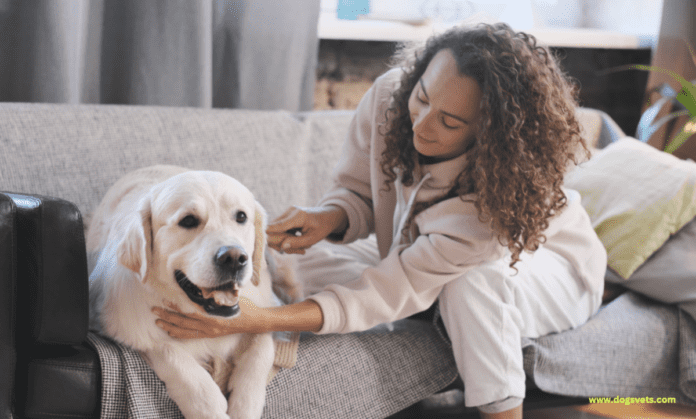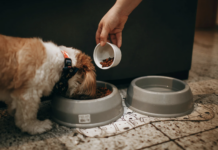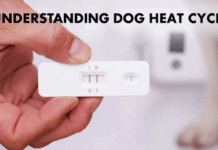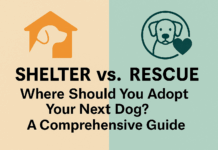Last Updated on January 12, 2023 by Dogs Vets
How to Care for Your Injured Dog
Like humans, a dog may suffer injury through overt and covert ways. A dog, however, cannot communicate pain or provide direction as to what should be done to alleviate it.
Finding out what kind of injuries a dog has is the first step in providing proper treatment.
It’s also crucial to be able to manage chronic illnesses as well as provide first aid for injuries that have just occurred. Learn how you can do all these below.
The Procedures to Care for an Injured Dog
- Your dog, no matter how tame, can bite or scratch if he feels threatened. Animals may become unpredictable and even deadly when in pain or fear.
- Never put your face near a wounded animal’s mouth or try to hug it. It’s natural to want to ease the animal’s distress in this way, but you might end up making things worse.
- Initiate any inspection cautiously and at a leisurely pace. If your animal’s anxiety levels rise, you should stop.
- If you need to transfer your pet, you must call your doctor or an emergency veterinary facility to ensure they’re prepared to receive you and your pet.
- If your pet isn’t sick, a muzzle may help prevent bites if you’re worried about being attacked.
- Towels, stockings, and gauze rolls may all be used as dog muzzles.
- Wrapping a towel over a cat or other small animal will help keep it still, but only if you leave enough room for the animal’s nose and mouth to breathe.
- If your pet is vomiting, don’t try to muzzle it.
- Prevent more damage by splinting or bandaging injuries before attempting to move an injured animal.
- If you want to protect your wounded pet from worsening on the ride home, you should keep it in a limited space. Pet carriers are the best option, but any box or container can do that.
- Various household items, such as a board, sled, door, blanket, or similar items, may serve as a stretcher for bigger dogs.
- When it comes to your pet’s health, you should always store important documents in a secure yet readily accessible location. Take them with you if you need to get your dog urgent care.
How Can I Stop the Bleeding on My Dog’s Wound?
Apply direct pressure with dry gauze to stop the bleeding, then cover the area with a wrap or clean, dry cloth. On the trip to the vet, you can keep the wound sterile and disinfected in this manner.
If possible, elevate the wounded area above the level of the heart.
Stopping the bleeding will be aided by this. Ointments, lotions, disinfectants, and other chemicals may slow recovery and should be avoided unless your veterinarian instructs.
Why Do I Have to Leave Certain Wounds Bare?
Surgical closure or bandaging is not an option in certain cases due to the location or extent of skin loss.
Bacteria may be injected deep into the tissues after a puncture wound or other trauma. It is risky and, in some cases, more harmful to close a contaminated wound without first doing surgical debridement than to treat the wound medically and let it heal.
To What Extent Will My Dog’s Wound Need Surgery?
Deep sleep or general anesthesia allows for easier access for lancing and draining abscesses. The vet will put a latex drain to prevent the incision from closing too rapidly, allow for good drainage, and avoid further buildup of infection.
Wounds are closed and sutured wherever feasible to facilitate healing. The incision will be kept open for topical therapy and drainage if there is excessive contamination or deep infection.
To remove debris or dead tissue from the incision, your doctor may need to sedate your dog.
Your veterinarian may choose to bandage the wound if it is not surgically possible to close it. Antibiotics will be given to your dog orally or intravenously, too.
In What Ways May I Best Treat My Dog’s Cut?
Your vet will provide in-depth instructions. Guidelines for basic medical care include:
- Remove any crusty or sticky residue from the wound by gently cleaning the area. This will prevent the spread of infection, keep the incision margins clean, and promote the growth of healthy new tissue.
- Give the medicines exactly as directed. Your vet may recommend antibiotics or antibiotic creams to treat the wound. Do not stop giving your dog antibiotics for any reason.
- Your dog should not be tempted to lick or gnaw at the sore. Protective collars (for more details, see the brochure “Elizabethan Collars in Dogs”) are necessary for many canines to keep them from causing damage to the area. Bandages, stockinettes, dog coats, and even t-shirts may be used to cover wounds, among other choices, depending on their position.
- Slowed healing of the wound is the goal. This is especially crucial after medically draining an abscess. The likelihood of a recurrence rises if the wound heals too quickly.
How May I Delay the Wound’s Closure?
Massage the skin around the incision to help open it up and drain any excess fluids while you clean it. In certain cases, this may cause bleeding or discharge.
Consider whether it’s a thick, infected discharge or a clear, thin fluid. Contact your veterinarian for advice if the discharge is red, green, or yellow and lasts more than a few days.
How Can I Sterilize the Cut?
When washing most wounds, warm tap water is preferable. You may also use a warm saltwater solution. About one teaspoonful of salt per two cups (500 mL) of water will do the trick.
Your vet may recommend cleansing using diluted chlorhexidine, surgical soap, or iodine to assist with debris removal.
May I Provide Solace to my Dog?
While some hurt dogs may prefer not to touch them at all, it’s best to sit quietly beside them and talk in soft tones if they seem reassured by your presence.
Do not attempt a comforting embrace since doing so may cause them greater discomfort or cause them to react violently if they are in agony.
Conclusion
While caring for your injured pet, the best approach is to be ready. Make sure to have the necessary care toolkit. It will help a long way. Here is how you can get a free Amazon gift card for your pet buys.
Fact Check
We hope you enjoyed reading this article. What are your thoughts on the topic?
“At [Dogsvets.com], our goal is to bring you the most accurate and up-to-date information on all things pet-related.
If you have any additional insights or would like to advertise with us, don’t hesitate to get in touch.
If you notice any errors or discrepancies in our content, please let us know so we can correct them.
We welcome your feedback and encourage you to share this article with others.”

















